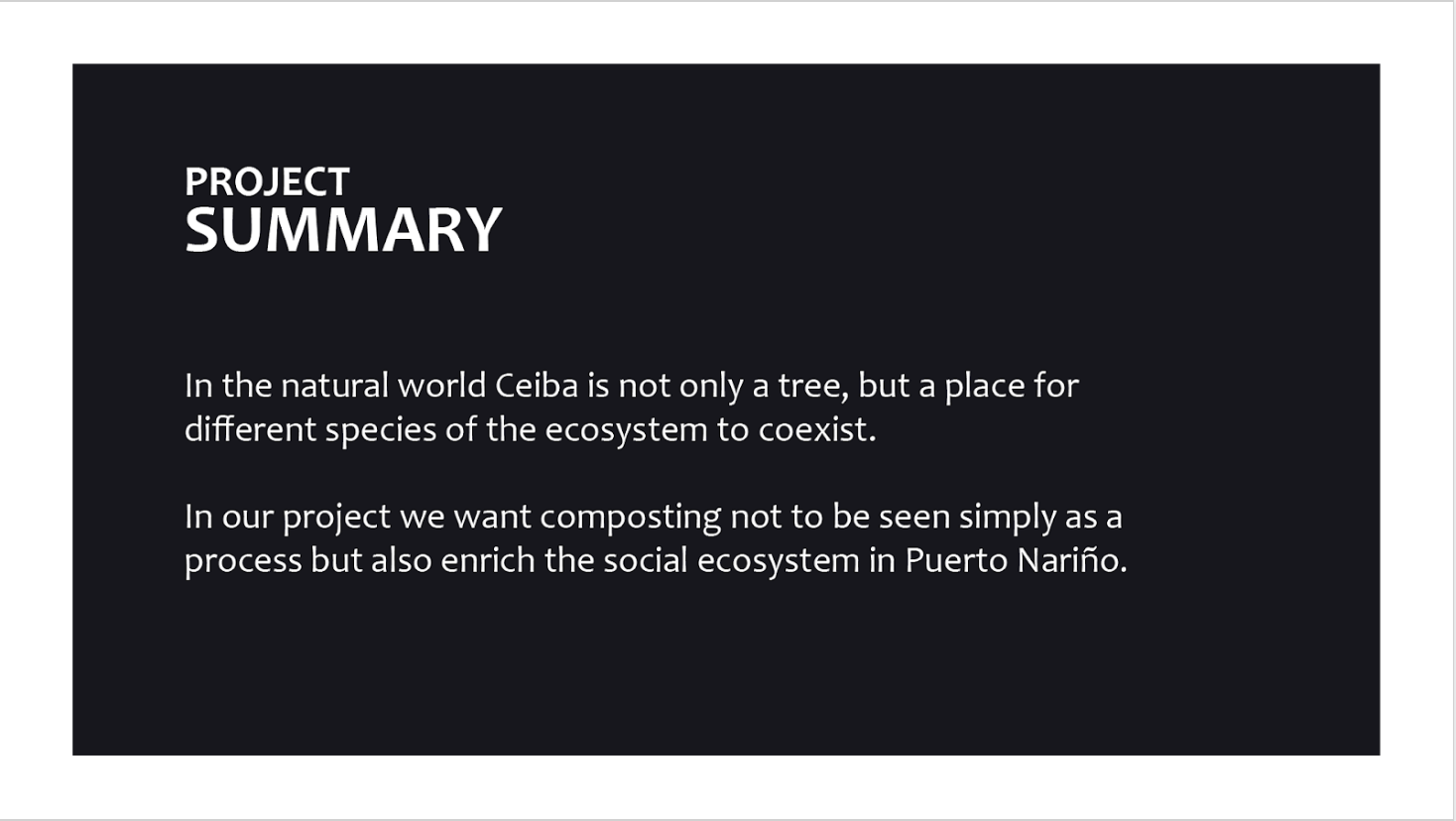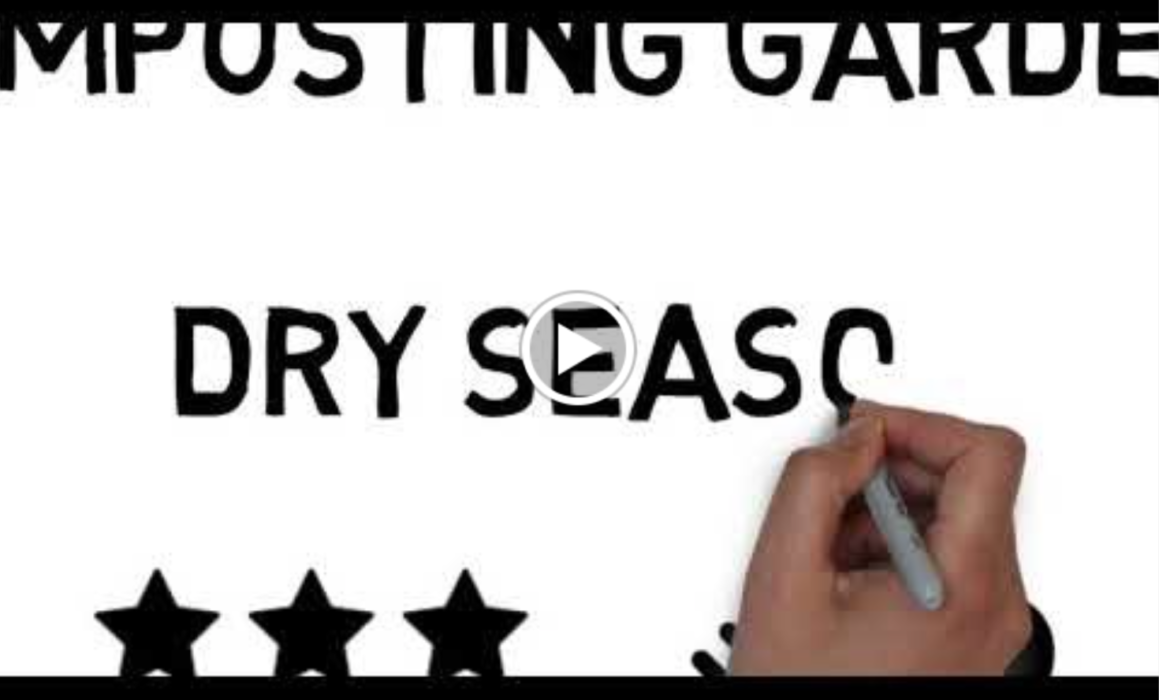Project Description
We went on a trip to Puerto Nariño, a town located on the shore of the Amazon River, as part of a social innovation project. We were to develop a design brief based on challenges we found onsite, doing field research. Puerto Nariño has about 6,000 residents (mostly indigenous) and is unique in that it is entirely pedestrian: no car or motorcycle is allowed in the town, as an experiment in an ecological community.
Given this context and the challenges that come with increased tourism, my partner and I designed our brief around a social intervention around composting. This would allow tourists to take part in keeping the town ecological, it would empower the local community to be self-sufficient, and it allow our client, the Omacha foundation, to continue playing a key role in the community.
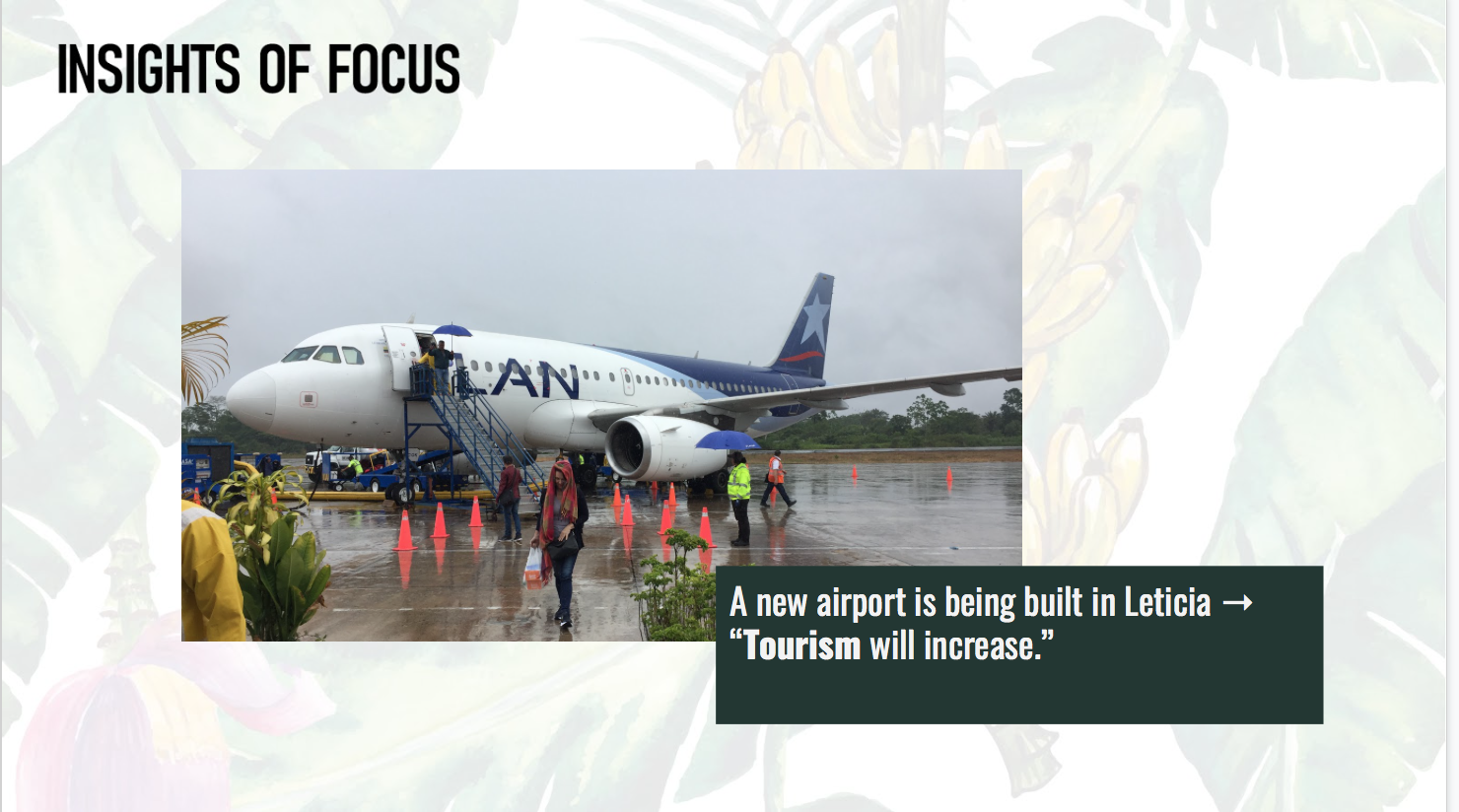
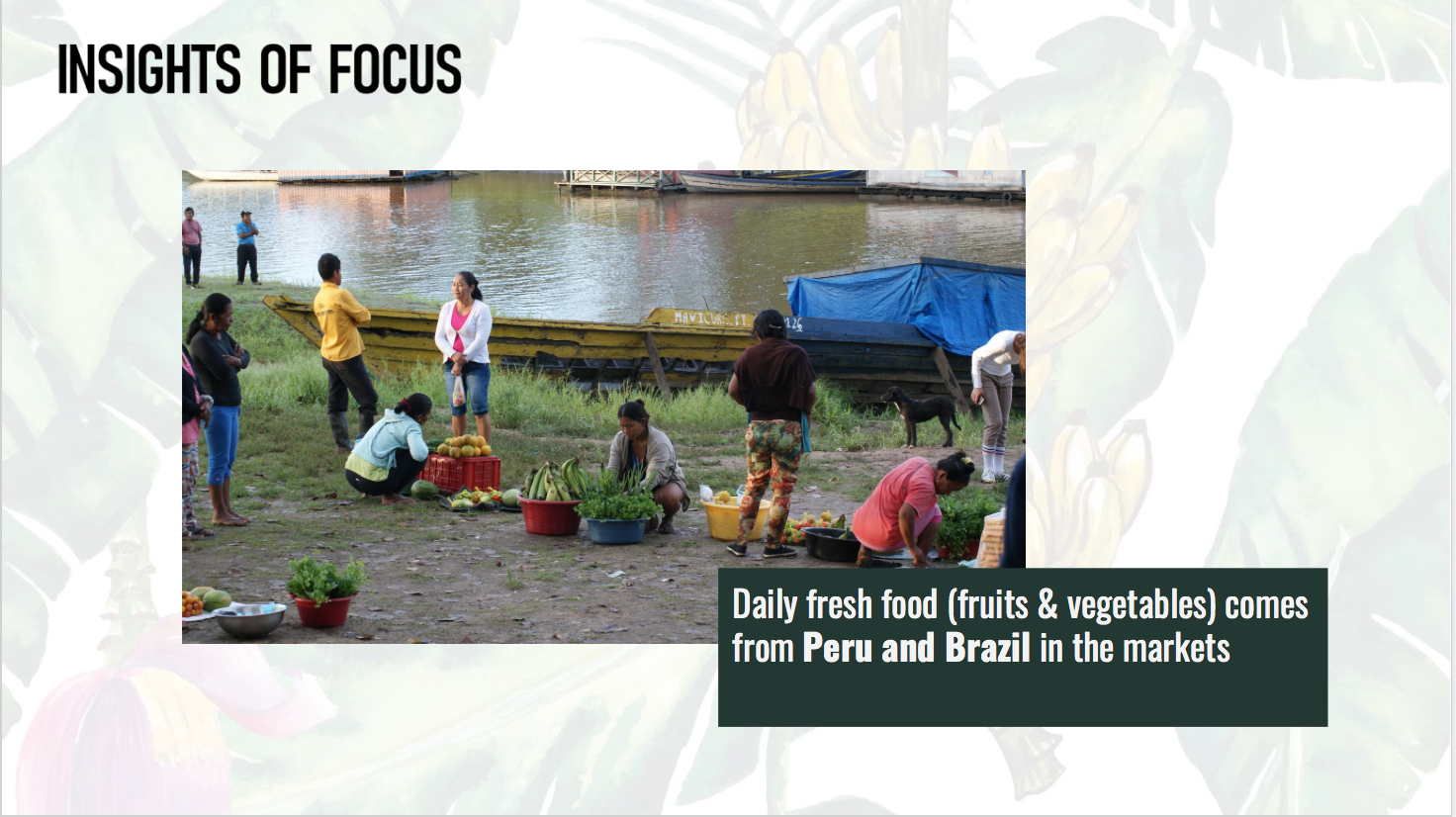
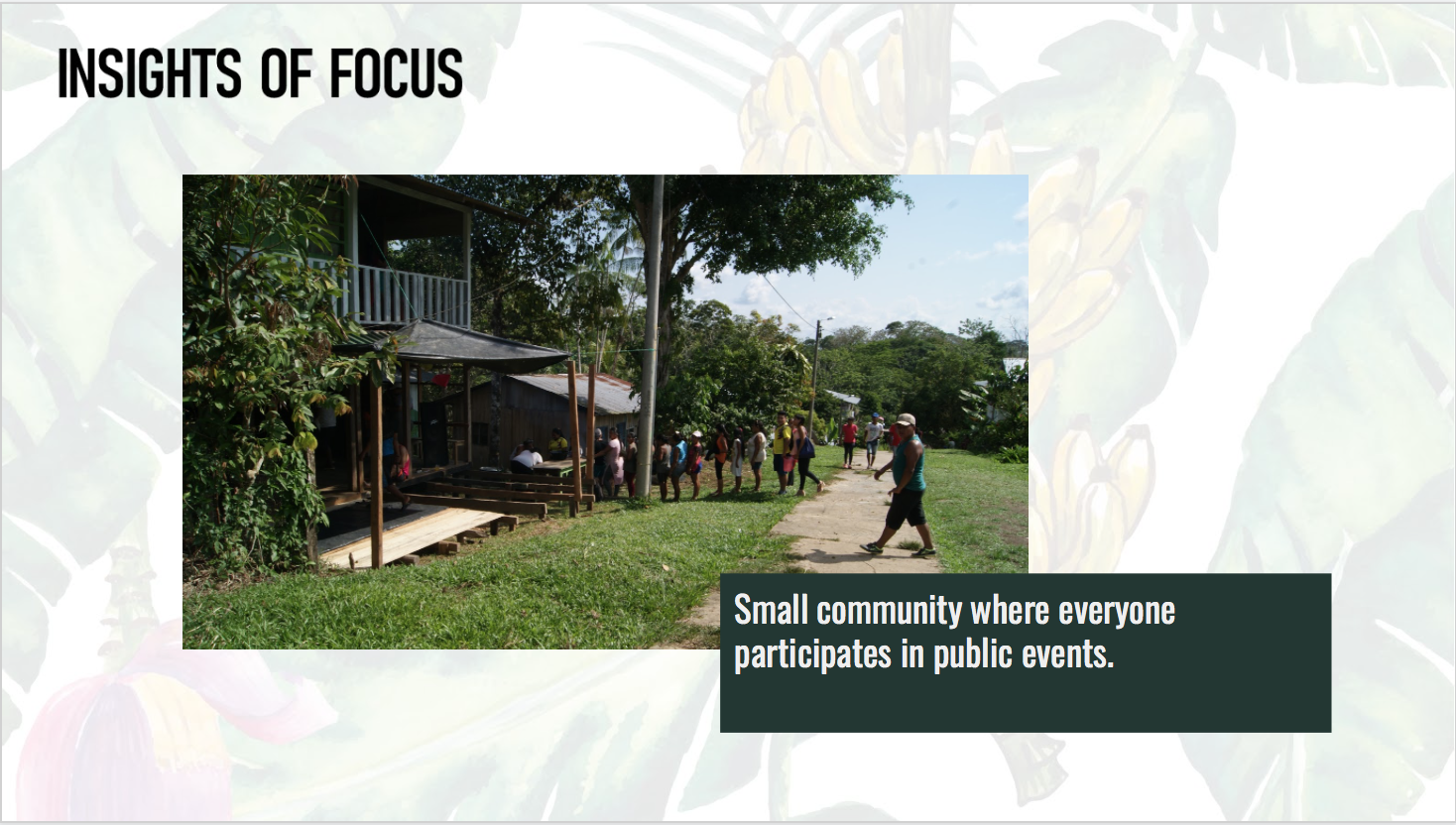
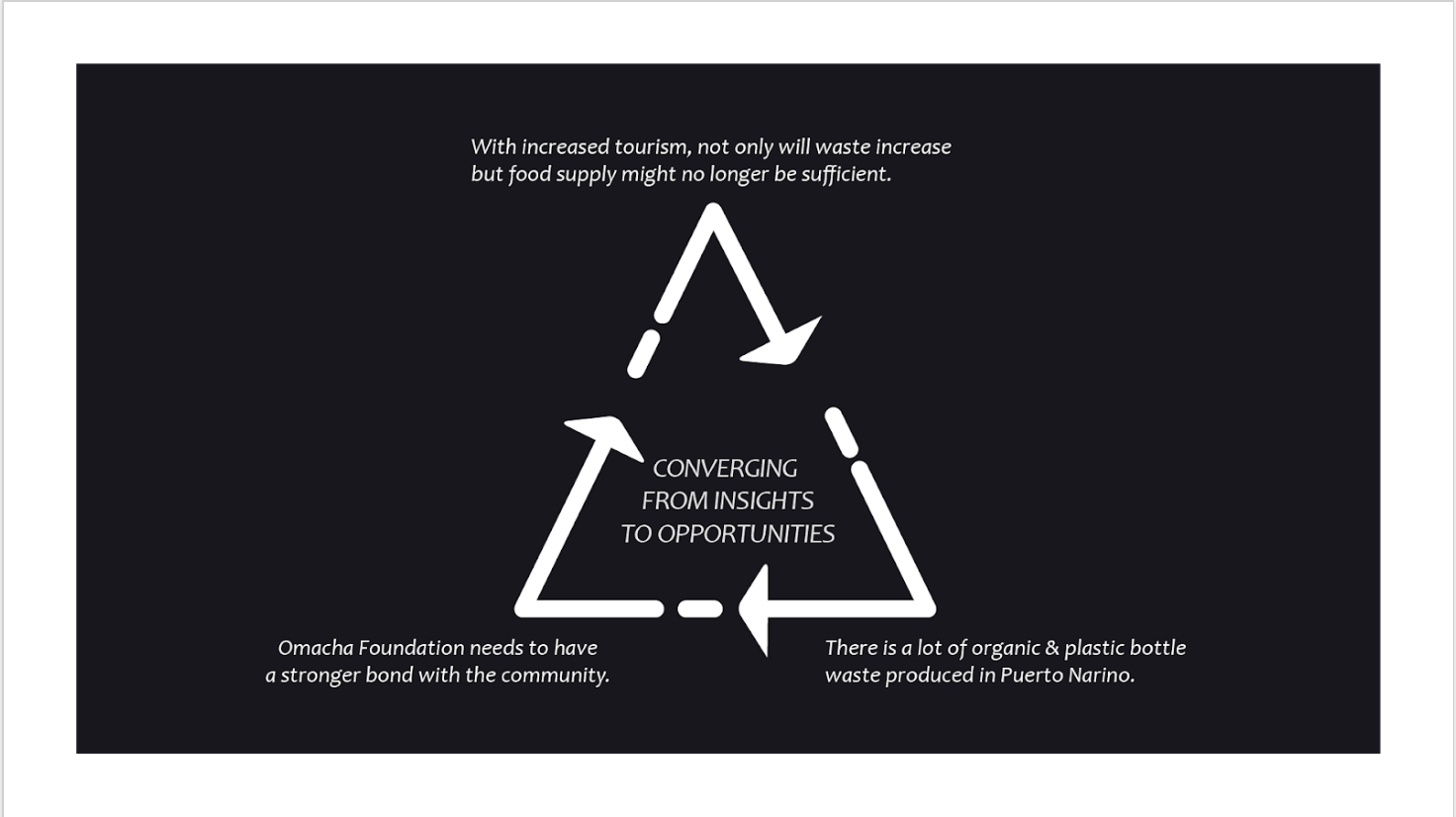
The convergence of our top 3 research insights led us to the challenge we tried to solve: How might we repurpose the enormous amount of plastic bottles while getting tourists to actively participate in ecological tourism? And since the Omacha Foundation was our client, we wanted to make sure the solution would be something they can drive, which in turn would reinforce their relationship with the indigenous community.
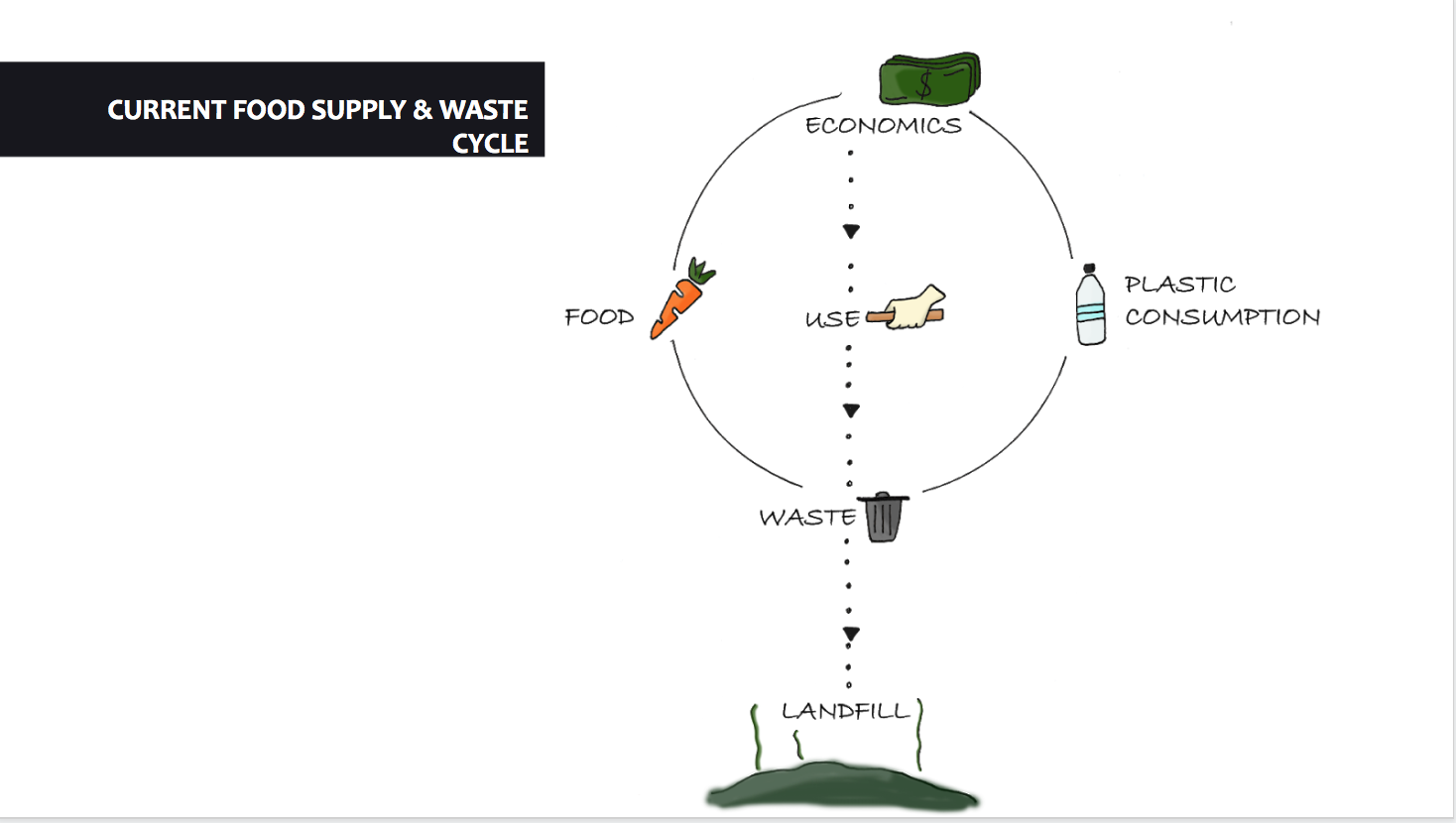
Our field research showed us that there is a lot of plastic bottles in the landfill, and a lot of the fresh fruits come from neighbouring Peru and Brazil. We saw an opportunity to reduce the waste to landfill and empower the community to become self-sufficient with respect to fresh fruits and vegetable production.
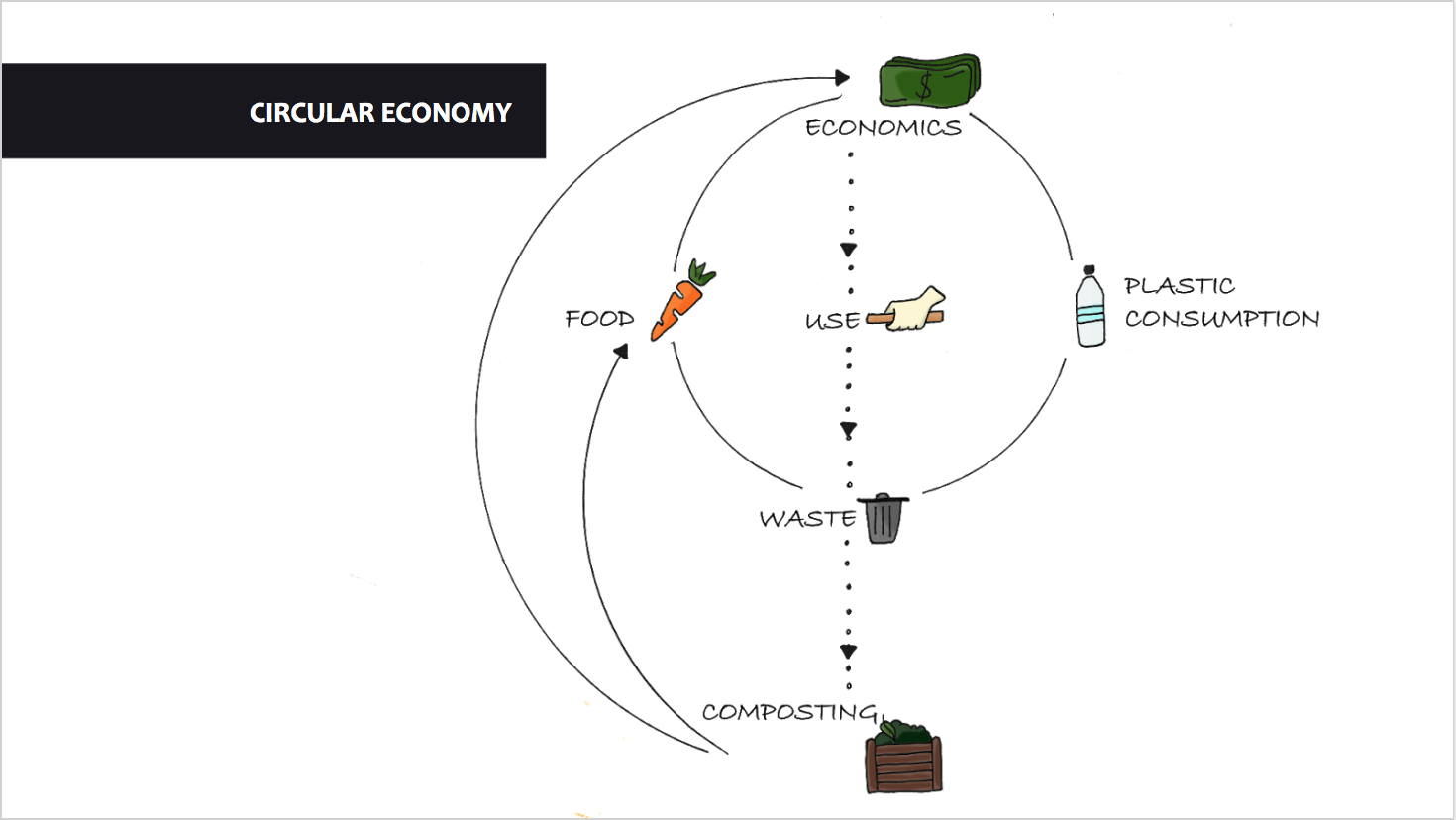
We called our solution CEIBA: A circular model of self-sufficient revolving around composting; it combines education, composting, traditions & tourism to create a stronger relationship between the Omacha Foundation, the local community and the touristic ecosystem.
We drew our inspiration from the Ceiba tree which shelters insects, birds, amphibians and mammals. It gets an entire ecosystem to live in harmoniously together.
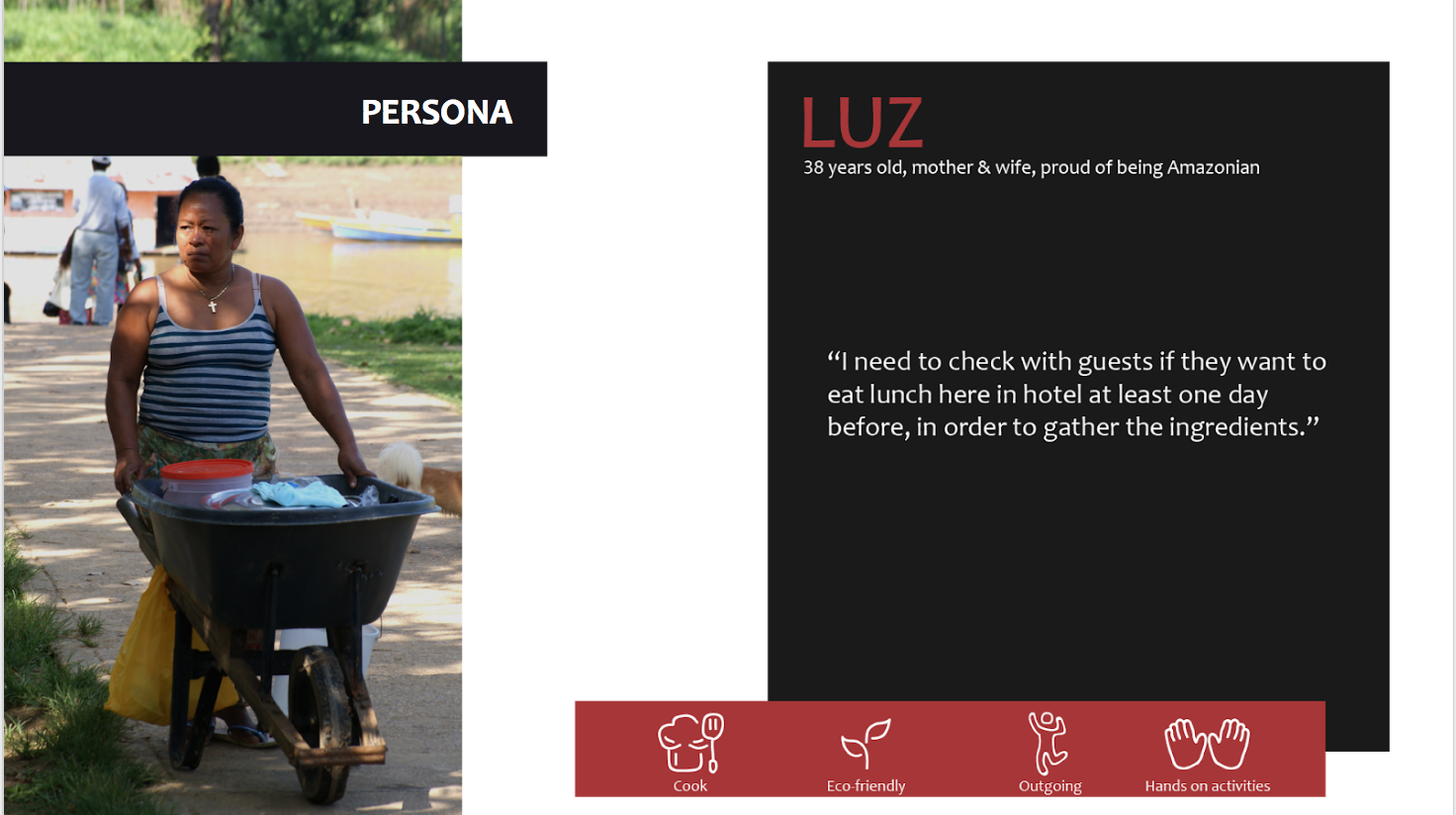
Our persona was based off of the restaurant staff, and staff that would make meals in hotels. Often times they needed to know who would be eating at the restaurant at least 1 day before, so they could shop accordingly the next day.
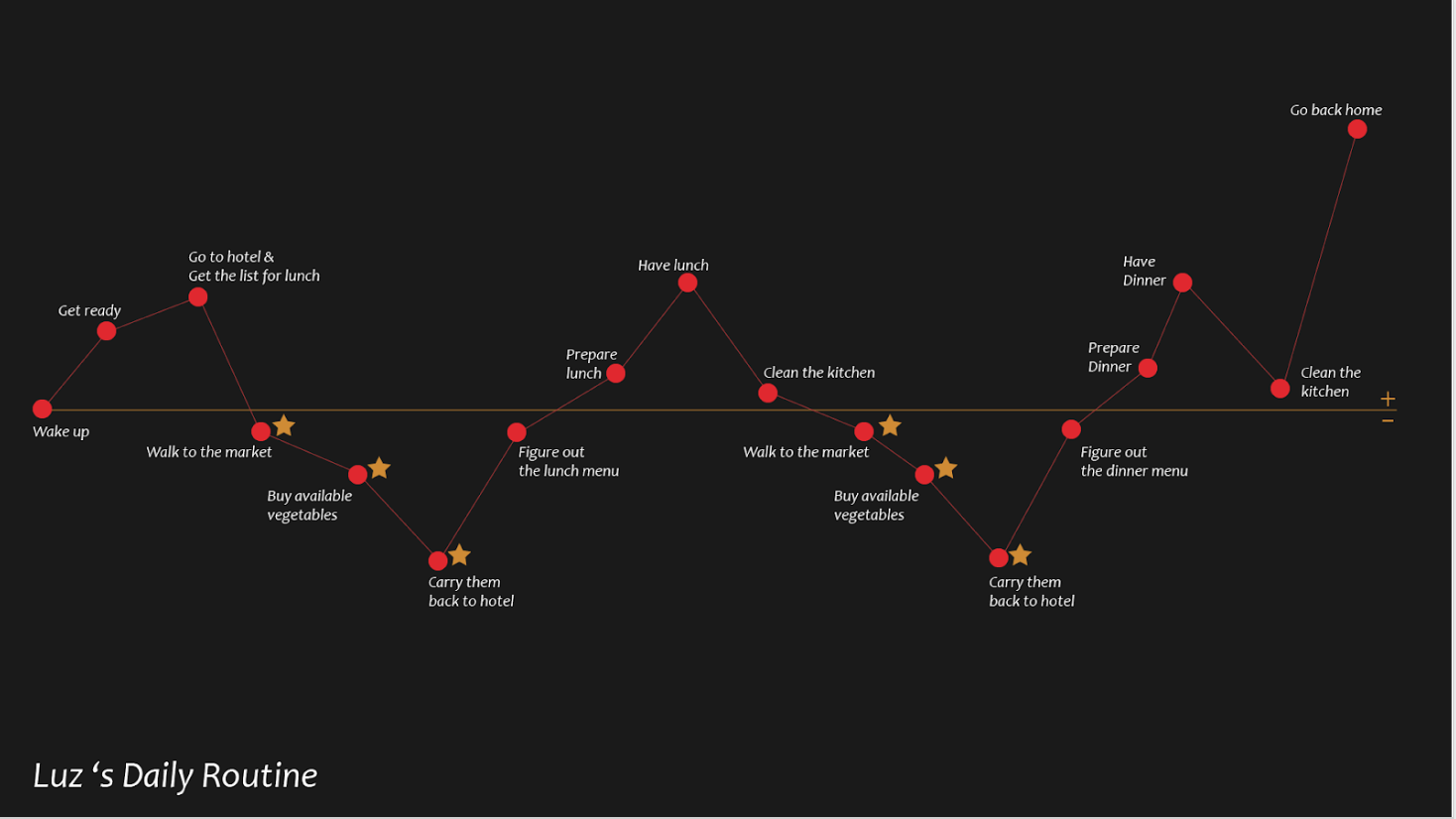
We recreated their journey the next day, with the ups and downs, and identified pain points and areas of opportunity. Activities such as walking to the market in the torrid heat and buying what was available could be transformed to watering the garden onsite, and being able to plant the vegetables that they need.
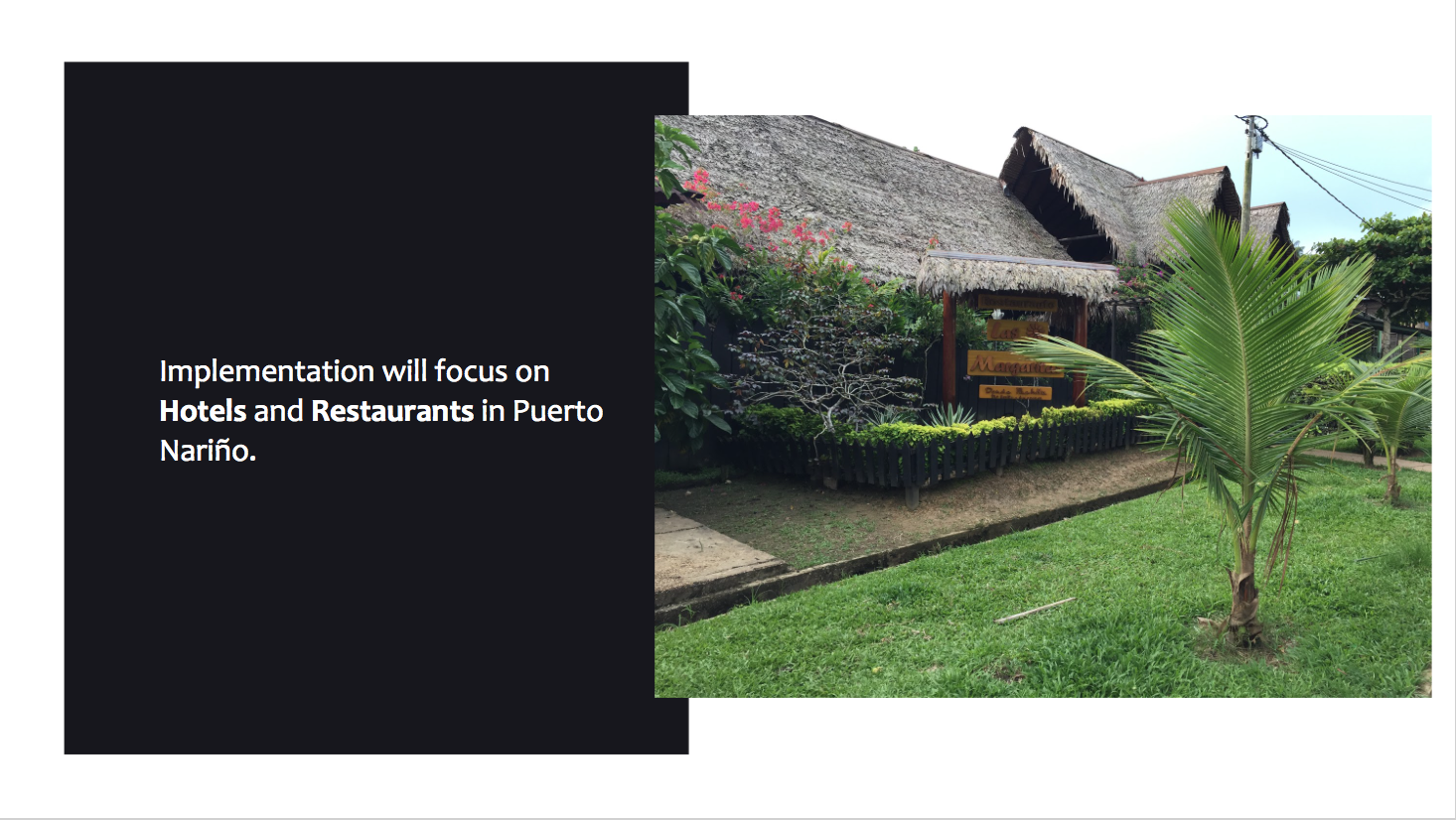
The value proposition in having the hotels implement the composting gardens are:
- Waste reduction from tourists who are staying at the hotel, by consuming local food
- More effective kitchen operations
- Puerto Nariño can demonstrate leadership in the “farm to table” movement
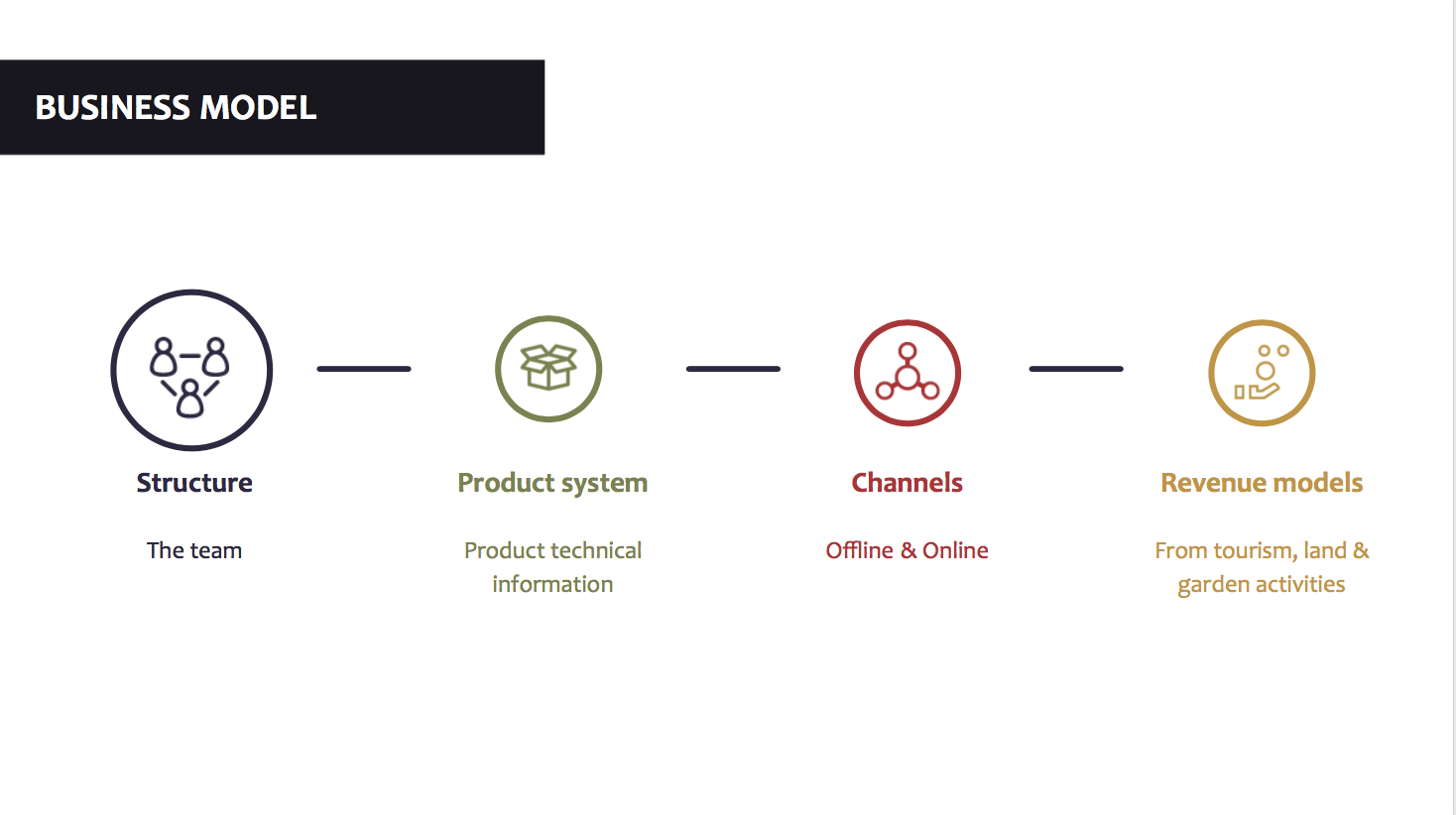
We analyzed the key pieces of the business model to make our solution sustainable.
- We looked at the different stakeholders: to team up with, to connect with, to influence
- We identified the key partners to pilot with (hotel + restaurant)
- As well as members of the community that would need to be involved
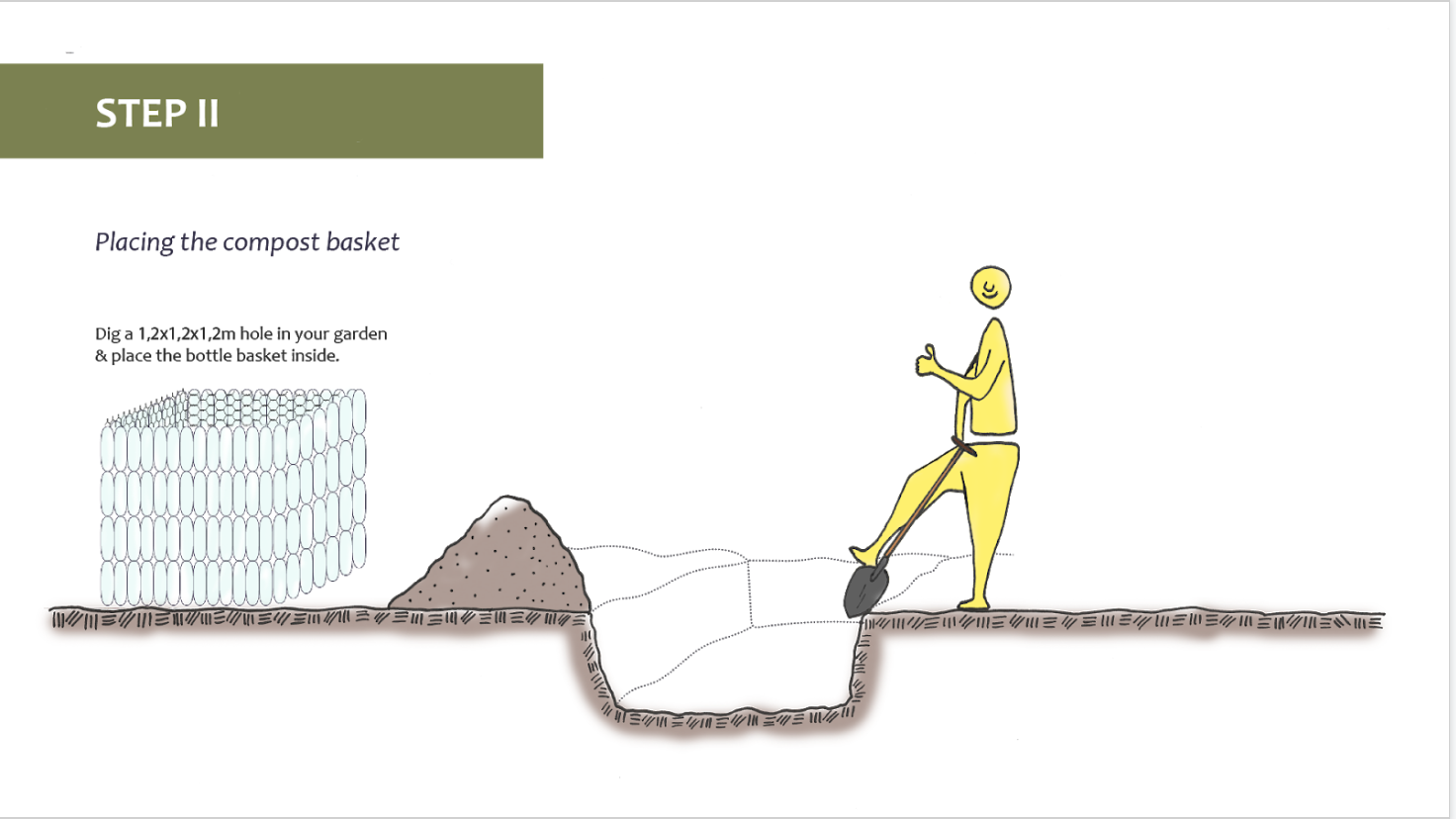
With an understanding of the local waste produced and other materials available, we designed a composting garden that would be easy to assemble, and would use the plastic bottles waste as well as bamboo (readily available).
We also designed a guide with:
- Information about composting: what is compostable and what isnt’
- Step by step guide to build the composting garden
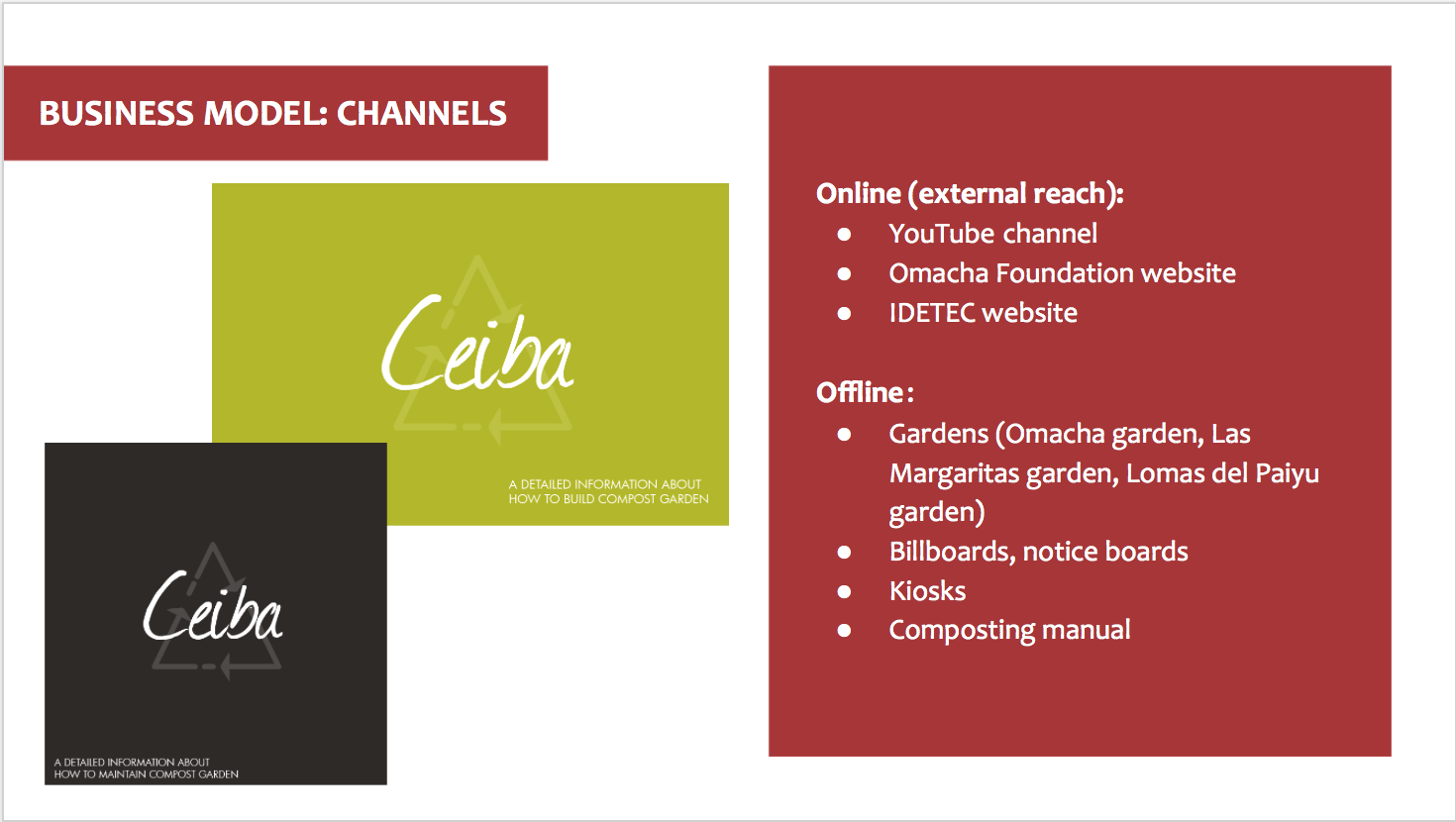
To promote this social intervention we had a mix of offline and online channels. The online channels aim to promote the initiatives to tourists and anyone around the world, while the offline channels are targeted to the citizens of Puerto Nariño. With limited connectivity, it is important to promote the initiative by word of mouth, events, billboards, and with a physical material.
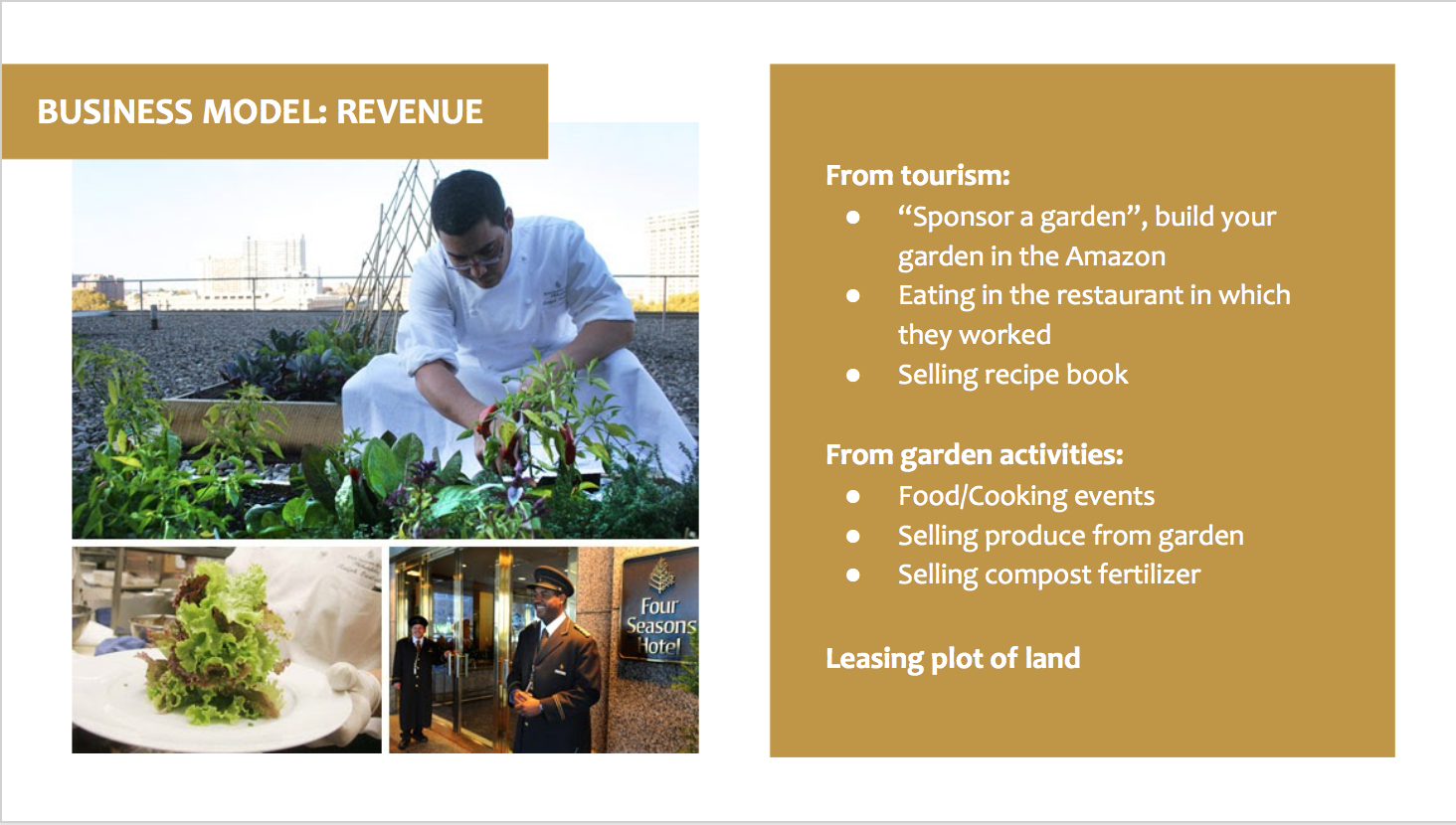
In order to make this initiative economically sustainable, we thought about giving tourists the opportunity to sponsor a garden and play their part in supporting eco-tourism; for those who enjoyed the local cuisine the purchase of a recipe book would also help support the initiative financially.
From a local-to-local perspective, allowing people to sell their fresh produce in the market, their fertilizer, or cook-off events was an alternative to keep the initiative viable in the long term.
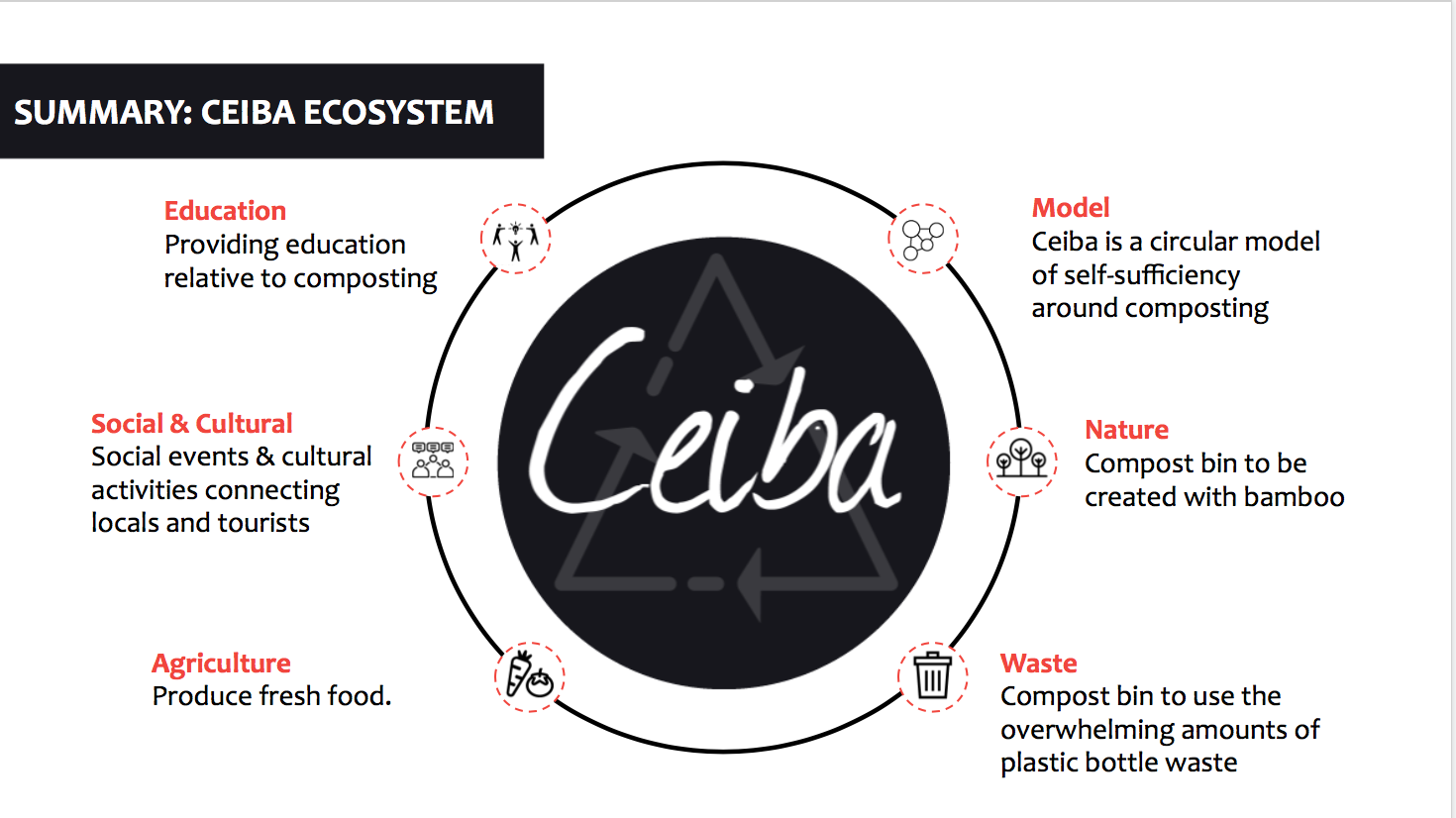
Through our solution, the Ceiba ecosystem brought together
- Education around composting and ecotoursim
- Community around social events, and connecting locals and tourists
- Nature by promoting self-sufficiency and using local natural materials
- Waste management by up-cycling existing waste that would otherwise end in landfill
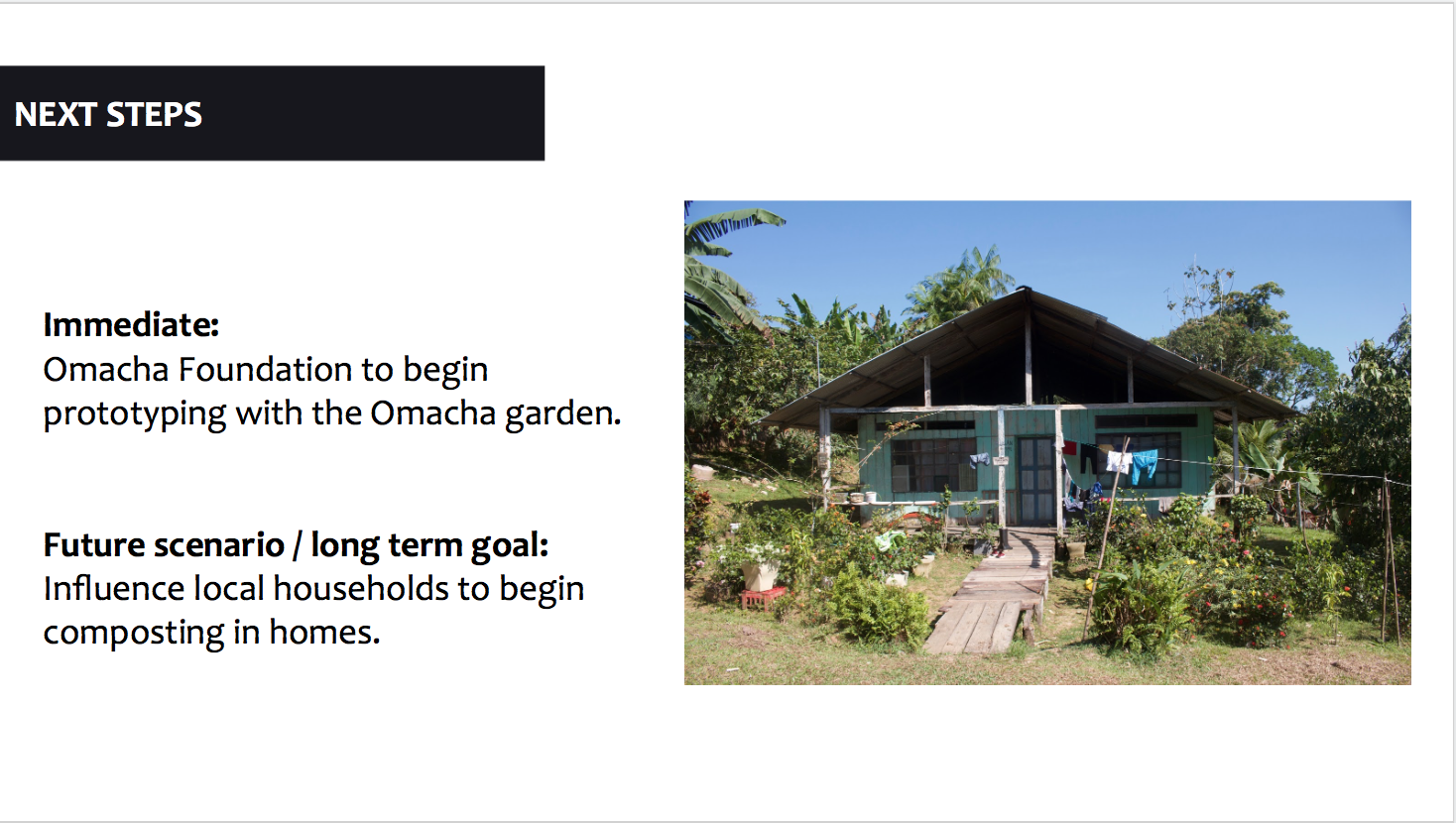
We went as far as transforming our research insights into a solution, and creating a 1st draft prototype (business model, roadmap, CAD design, an actual manual to build the composting garden, and a composting guide).
The next steps are to relay these deliverables to our client, the Omacha foundation, to prototype with one restaurant since we don’t have the opportunity to return to Puerto Nariño for testing. Based on the results we would suggest some tweaks or alternatives.
EXPLORE MORE PROJECTS ON MY PORTFOLIO!
